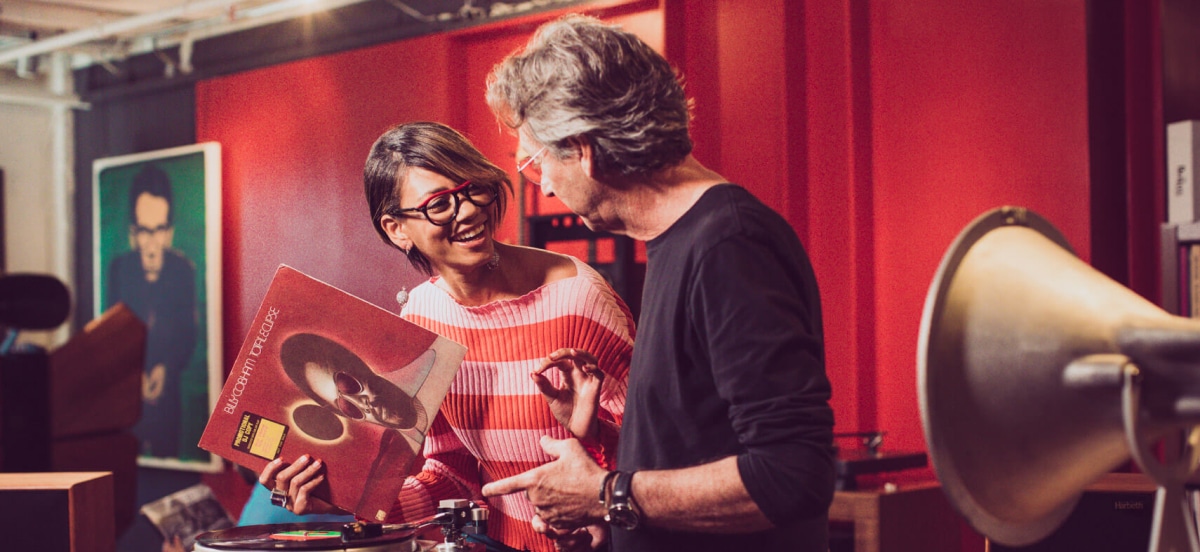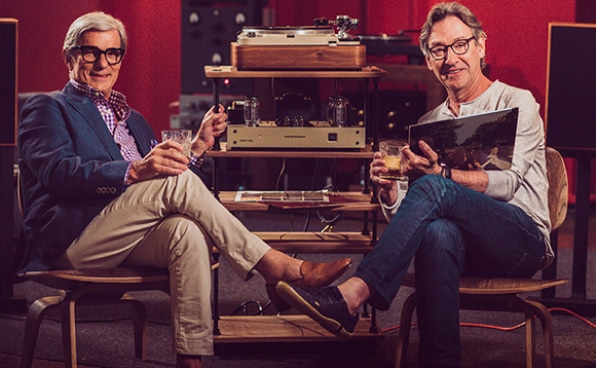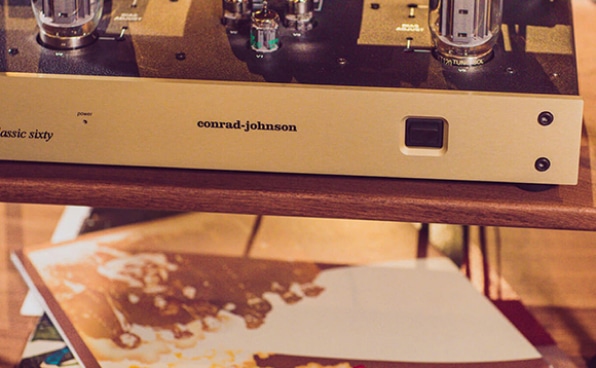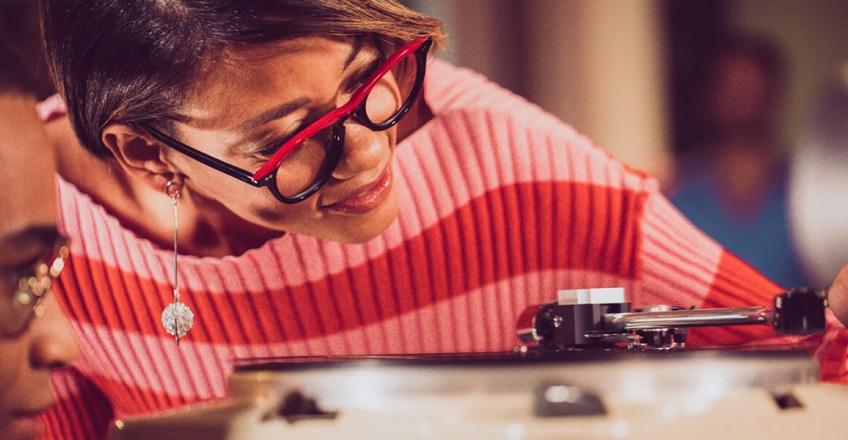
“I’m A Kid In A Candy Store”
Posted on November 28, 2018
I am about to visit a small custom high-fidelity music studio in Miami with my dear friend Edward Beiner. Let’s make no mistake. This is not your big box audio store. Rather, it’s a somewhat obscure little outlet that caters to tried and true audiophiles. Known only to the few, but held in their highest possible esteem, it is here that these aficionados of sound find what they seek. All impressive, mostly early generation stuff.
Once inside, it’s easy to see that Edward Beiner is a man in his element. Or, perhaps more accurately, a kid in a candy shop. Surrounded by artfully engineered components of the highest caliber is what some would say, “is his thing.”

Indeed, everything on display holds him captive. From the ultra-advanced digital speakers powered by original analog technology to the acoustically faithful amplifiers that date back to the late 1950s and early 1960s — a period often referred to as the “Golden Age of Hi-Fi.”
As far as Edward Beiner is concerned, those who designed this equipment were nothing short of genius—a testament to mankind. He admires a set of transparent antique vacuum tubes built atop a 50-year-old amplifier. Imagine, he says, “engineering devices of such sophistication and beauty given the limited knowledge, tools, and technology available back then.”
Suddenly, he pauses, scans the little showroom looking beyond the seductive audio equipment, as if to detect something even more special in the air. He is in his moment.
“Can you feel it?” he asks rhetorically. “Here breathes the art and soul of sound equipment.” Mind you, all this excitement and we haven’t even experienced any sound yet.
He briskly walks me over to a display featuring a vintage Hi-Fi system. We are looking at carefully selected components valued at roughly the price of a Porsche Panamera. With great excitement, he explains to me the importance of amplifier vacuum tubes, why analog sound delivers more authenticity than digital, and how the engineers who crafted these devices were well ahead of their time.
He then shows me a more recent system, carefully pointing out the fact that while the newer system may not be from the ‘60s, it’s nonetheless quite “authentic.” He explains that as long as the design and assembly of the newer version conforms to the standards and essential features of the original, it can find its rightful authenticity.
Little does Edward Beiner realize that it is his relentless pursuit for authenticity what makes his own work so irresistible. And it shows.

Like quality, originality and uniqueness, authenticity is a fundamental attribute that defines the Edward Beiner brand. It is an inherent promise.
One that shows in each and every product on display in his showrooms. It shows in the eyes and words of his Eyewear experts who present and explain the details of each pair of Eyewear — and it shows in the eyes of his increasingly younger clientele who come to experience and buy the magic of his authenticity.


Thus, it’s a philosophy that suggests authenticity needn’t be limited to the past. Rather, it’s an attribute that is timeless, perpetuated by ingenious artisans throughout the decades.
In a world increasingly characterized by parity offerings, fake news, virtual ideas, and general artificiality, that search for authenticity among today’s younger clientele is not hard explain. A longing for “the real thing” sweeps upon us from the horizon.
But as Edward Beiner is fast to point out, the real thing comes in many forms. It isn’t born from a single established cultural reality but from many upon which new and authentic creations flourish. One can only surmise that it’s this unusually expansive view of the past, present, and future that drives his creative choices, and ultimately manifests in a lasting Edward Beiner brand experience.










